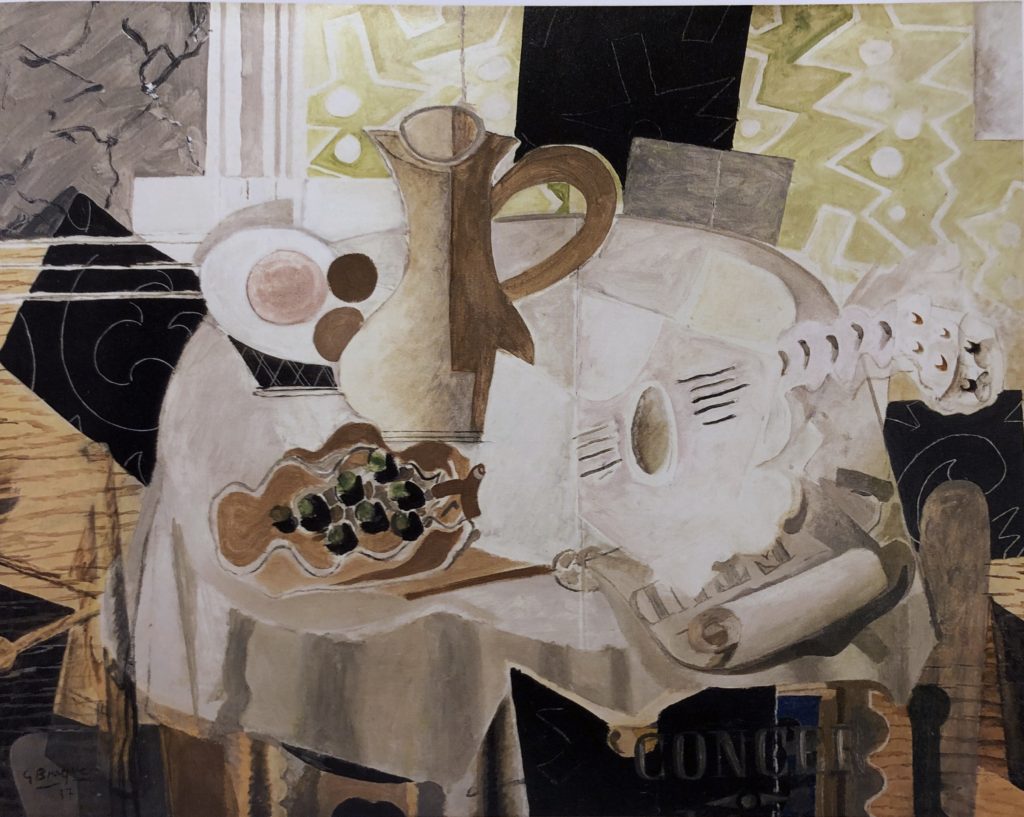20th century mystic

On my visit to LACMA last month, I was delighted most by the work in two particular areas of the museum: Fantasies and Fairy Tales, a themed exhibition of arresting prints and the small wing devoted to the Janice and Henry Lazarof Collection. The latter had the feel of those private collections converted into museums–the Frick, the Phillips–where the taste of the collectors is tantamount to a class on how art should be made. Nearly everything in the Lazarof Collection begged to be photographed, but when I tried to take a shot of the Braque above, the guard hurried over and chastised me, which was a surprise, because the wing appeared to be a permanent installation of work–a way of sharing the vision of two insightful collectors with the public–not a temporary exhibition, which seems to be the only shows that prohibit photography now in an effort to increase catalog sales. I asked, therefore, if there was a book available, and he directed me to the shop where it was on sale and for a discount. It was a fortuitous purchase because it includes a long essay on Picasso, so prominently featured in this collection, that turned out to be an indispensable aid to the thinking I’ve been doing, since my visit to Los Angeles, about one particular Picasso print I saw elsewhere at LACMA–it changed my understanding about that painter whose fame and position in the history of 20th century painting has always, for me, eclipsed the aspects of his work that have turned out to be most powerful and intriguing.
So I purchased a book simply to bring home an image of this particular still life by Braque, which was done toward the end of his most fertile period, from his move toward synthetic Cubism through the more and more idiosyncratic interpretations of pedestal tables, the “gueridons,” his most personal motif, especially with a guitar on board. It preoccupied him for at least twenty years; the most representative and familiar example of this series is The Gueridon at the Phillips. What’s astonishing about this work, for me, is that everything in the paintings from this period–with a few exceptions–seems to have been invented perfectly, naturally, as if Braque were proceeding like a scrupulous realist, where you know the work is great because the proper marks are the ones that most faithfully reproduce exactly what’s seen. The rules are obvious and simple. Here, none of that is the case, there is no common sense guideline for what makes a Braque so manifestly perfect–everything he sees or imagines is flattened into an essentially arbitrary pattern, and yet though every shape and line and color seems the outcome of improvisation, the final result looks inevitable, almost immutable and right, but also deeply felt in a way that seems in a class of its own next to all the other work that sprang from the Cubist movement. How a painter achieves this is the great mystery–on a par with the question of how Vermeer enabled a fleeting moment in an average day to look eternal. Braque’s own enigmatic journals only deepen the mystery and suggest that his path, once he broke with Picasso, took him more and more deeply into the region he entered via synthetic Cubism–a long, meditative and assiduous creative exploration during which Braque rightly felt infallible without ever letting his ego know what he was up to. He’d reached the artistic equivalent of a state of grace:
On this painting, from Envisioning Modernism, p. 62:
The viewer is thus forced to focus on the tenuous relationship between the still life and its environs, demonstrating what Braque called his “great discovery”: “Objects don’t exist for me except in so far as a rapport exists between them or between them and myself. When one attains this harmony one reaches a sort of intellectual nonexistence–what I can only describe as a state of peace–which makes everything possible and right. Life then becomes a perpetual revelation. That is true poetry.”
Comments are currently closed.